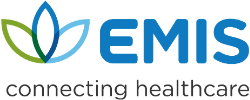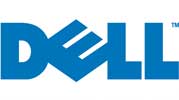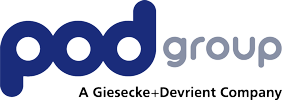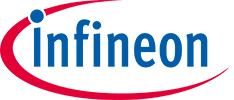World of IoT 
IoT in Health & Life Science
Hospitals, Clinics, Care Homes
Application Types (click for more details)Home Monitoring, Telemedicine
Application Types (click for more details)Pharma & Life, Science Research
Application Types (click for more details)Hospitals, Clinics, Care Homes
IoT technology has transformed hospitals, clinics, and care homes. IoT helps healthcare professionals to keep track of patients using connected device data to improve outcomes and monitor vital signs. IoT can also keep track of staff and medical equipment to optimise work flows for better patient care.
Treatment
IoT technology helps patients and doctors stay connected with remote monitoring through IoT-enabled devices. Healthcare providers can diagnose patients based on this data and recommend drug therapy and monitor patients’ conditions.
Following the events of 2020, telemedicine is the star of the show in healthcare. Research from McKinsey shows telemedicine usage is 38x higher than it was pre-pandemic. With the right IoT and mobile connectivity solutions, doctors can help more people and save more lives.
But many healthcare providers lack the time, resources, or expertise to get started with IoT. We’re here to fix that.
We help businesses optimise processes, enhance decision-making, increase revenue, and more through custom-built IoT and mobile connectivity solutions, available across 185 countries and 960 networks.
Founded in 2015, we’re a team of creators and tech lovers who believe things work better connected. We’re UK-based, but hail from all over the world.
Like our namesake—the supercontinent that connected the world before separating into the continents of today—we’re connecting everything.
Contact details:
Dan Cunliffe, Managing Director
sales@pangea-group.net
Patient Management
Hospital staff and caregivers can use IoT-enabled devices to monitor and track patients’ vital signs to detect if there is deterioration and are alerted to act.
ERs
IoT can help to reduce wait times to admit emergency patients and identify those who need critical care most.
ICUs
IoT technology can help doctors keep track of their critical patients in the intensive care unit with IoT-enabled sensors that collect a patient’s vital information.
Surgery
IoT technology is used in remote surgery or telesurgery to transfer data from connected devices used by surgeons to perform surgery. The IoT-enabled devices can be VR goggles and robotic surgical instruments. IoT sensors and RFID readers installed in operating tables and instruments can also track surgeon’s movements.
In-ambulance Services
IoT sensors and connected devices help ambulance medics to transmit patients’ vital signs to the hospital while in transit. Hospital staff can then prepare for the patient’s needs ahead of intake and start treatment more quickly with the relevant data.
Home Monitoring, Telemedicine
Telemedicine has accelerated in the healthcare industry. Healthcare providers can now attend to patients via videoconference and use remote monitoring to analyse patient data in real-time. The use of IoT-enabled devices and sensors are also encouraged by medical aid schemes to track patients’ chronic conditions, to improve care delivery and quality of life.
Chronic Disease Management
IoT is helping to improve the health of patients with chronic conditions such as heart disease and diabetes. IoT-enabled devices like wearables, wireless pill bottles, nanotechnology and ingestible sensors, use remote monitoring to track and analyse the chronically ill. This can reduce the burden of chronic diseases, lower costs and enhance the quality of healthcare.
Post Treatment Management
IoT devices that dispense pain medications to prevent overdoses, applications that guide patients through a personalised care plan, wearables that send alerts for upcoming appointments or medicine regimens, these applications help speed up the recovery process, can detect any complications and reduce hospital time.
Remote Monitoring
Remote monitoring applications through wearable devices and sensors can minimise the risk of falls, increase patient compliance with managing chronic conditions, help monitor high-risk pregnancies and be used for contact tracing.
Kajeet provides optimized IoT connectivity, software and hardware solutions that deliver safe, reliable and controlled internet access to nearly 3,000 businesses, schools, state and local governments and IoT solution providers.
Contact details:
Dominic Marcellino
dmarcellino@kajeet.com
Pharma & Life Science Research
IoT is used in the pharmaceutical and research industry to ensure safe and secure development and distribution of medicines. IoT-enabled devices and sensors track production, monitor environmental conditions to ensure quality control, connect, control, and diagnose pharmaceutical equipment.
Drug Development
IoT enabled devices can help to improve drug development by enhancing the productivity rate. IoT applications monitor the whole chain of the production line, from processing to packaging. IoT devices and real-time sensors help to eliminate lags and ensure product quality throughout processing.
Clinical Trials
IoT has helped streamline clinical trials by boosting participation, helping with real-time data collection, and processing and monitoring the safety and compliance of patients partaking in trials. IoT devices are used to monitor medical conditions such as weight, heart rate and sleep. IoT has also reduced the cost of conducting clinical trials.
Laboratories
IoT technology is used in laboratories to collect and safeguard data, remove the need for manual data entry, automate lab equipment, collect more complete data, and achieve compliance with standards and regulations. Biometric ID bracelets, RFID tags, wearable displays and barcode scanners help make laboratories more efficient by streamlining work flows and optimising data capture.
Things
MRI/CT/X-ray
X-rays, MRIs and CT scans are all done digitally. IoT sensors inside these machines form a digital image which is reviewed by AI and medical staff to detect and diagnose problems. IoT sensors can also monitor device performance to avoid malfunctions, IoT sensors are also used to monitor radiation levels.
Robotics
IoT-enabled robotic devices that are used in surgeries to detect the difference between healthy and abnormal tissue, miniature robotic devices that can perform surgeries inside the body, IoT-enabled service robots used to aid nursing staff in manual tasks such as disinfection and transporting supplies.
Pumps
Examples of IoT in pumps are, IV infusion pumps that can monitor and track dosages, heart rate and temperature, IoT-enabled sensors that attach to asthma inhalers to monitor symptoms and help reduce asthma attacks.
Ventilators
IoT-connected ventilators to allow nurses to watch patients while at a safe distance while monitoring and tracking ventilator settings in real-time.
Dialysis
IoT sensors to remotely monitor temperature, potassium, and heart rate during dialysis procedures performed at home, results are sent to the physician and analysed. This helps reduce hospitalisation and improve the patient’s quality of life.
Equipment
Connected laboratory equipment to enable remote monitoring and automatic data collection to ensure against failure of that equipment. Medical equipment tagged with sensors to track its location within the hospital.
Vital Signs
IoT enabled devices that monitor vital signs inside and outside the hospital such as glucose trackers that monitor insulin and glucose levels, wearable, or implantable defibrillators to monitor for heart attacks, sensors for stroke patients to monitor muscle movements.
Home Modems
Modems installed in elderly homes or care homes to provide essential connectivity to monitor blood pressure, personal health monitoring devices and CCTV cameras to monitor patients and report emergencies.
Wearables
IoT-enabled wearables such as devices worn to protect against or detect concussions, watches to monitor movement disorders like Parkinson’s disease, smart contact lenses that monitor for glaucoma, wearables that assess medication adherence, connected blood pressure cuffs that are linked to a symptom tracking app.
Video Monitoring
Remote video monitoring to monitor patients in rehab, managing occupancy levels and social distancing in hospitals rooms and ensure patient care and staff safety.
Connected Lab Equipment
Laboratory equipment that uses IoT enabled sensors to monitor location and usage, to ensure it is in good working order or to predict breakdowns.














